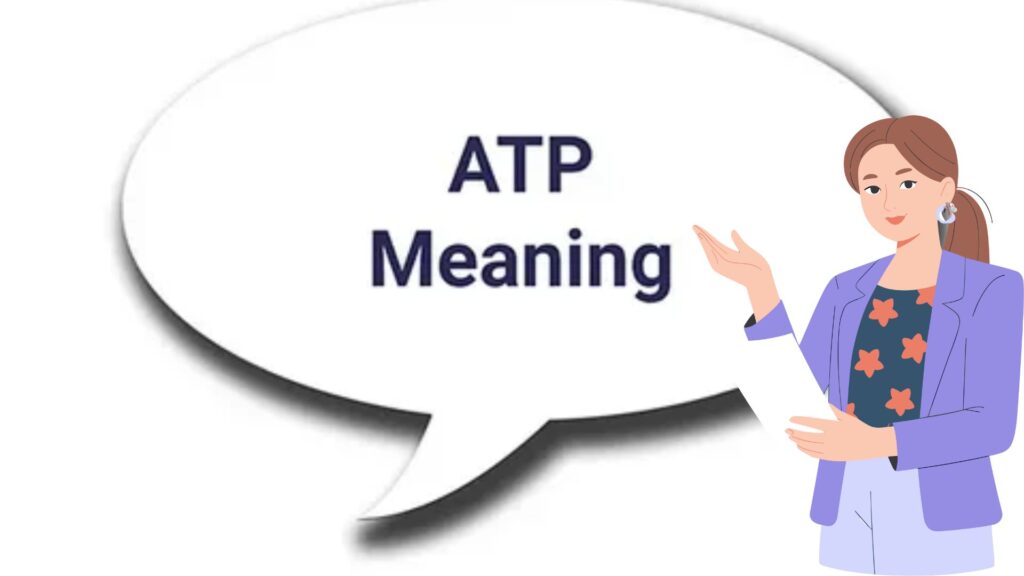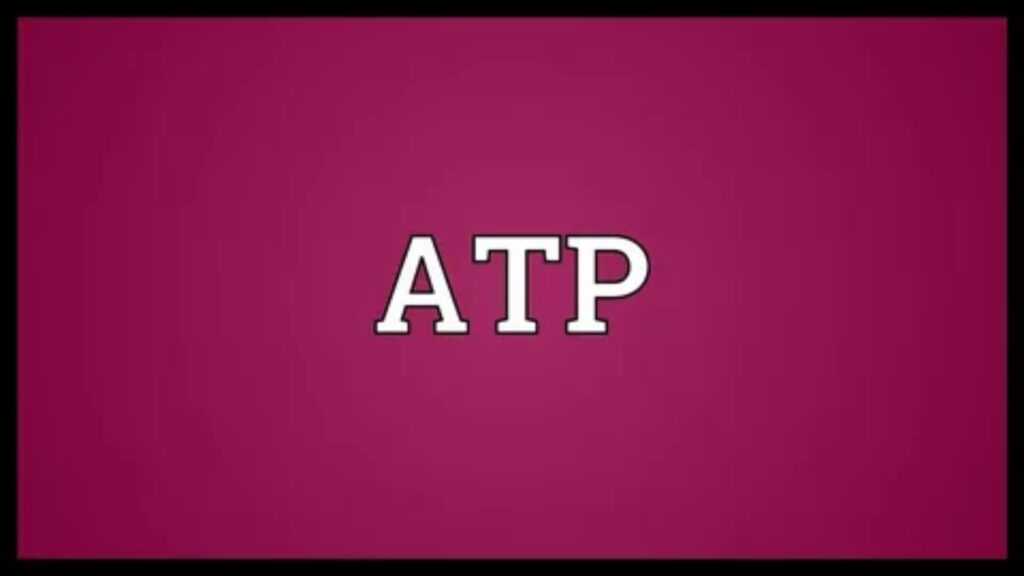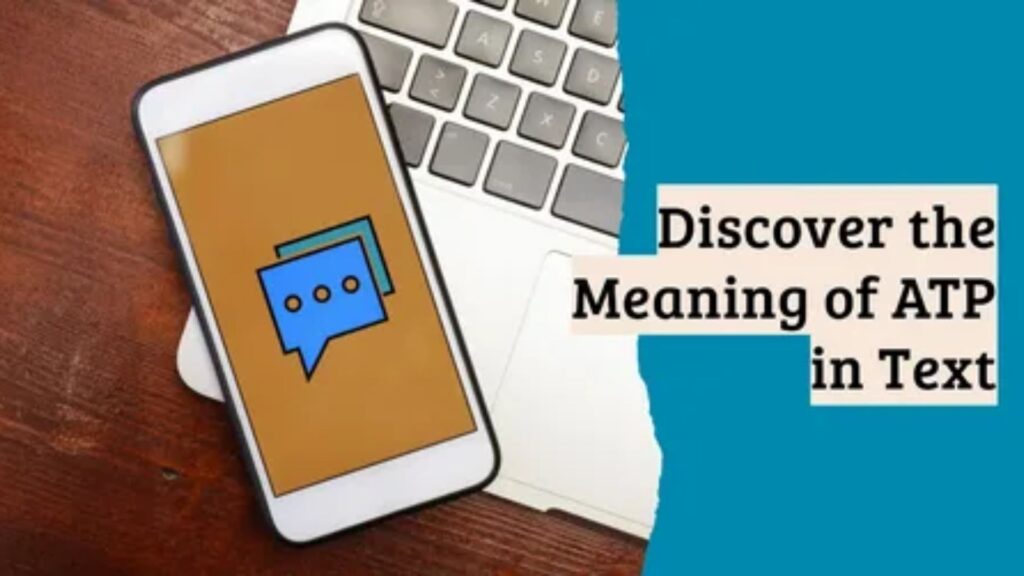ATP Meaning in Text
Language never stands still especially in the digital age. Every year, new slang terms and abbreviations pop up on social media, reshaping how we talk and text. One of the most popular ones floating across TikTok, Instagram, and X (formerly Twitter) is “ATP.”
If you’ve seen someone post, “ATP, I don’t even care anymore,” and wondered what does ATP mean in text, you’re in the right place. In this guide, we’ll explore ATP meaning in texting, its emotional nuances, when to use it (and when not to), smart alternatives, and how its tone can completely change depending on context.
By the end, you’ll know exactly what ATP means in text, how to use it naturally, and why it’s become such a powerful expression of modern emotions online.
The Rise of “ATP” in Everyday Digital Talk

Texting culture has evolved from full sentences to expressive shorthand. Today, acronyms like “FR,” “SMH,” and “ATP” shape how we convey emotions quickly.
The abbreviation “ATP” is a prime example of how online communication condenses complex feelings exhaustion, acceptance, or frustration into just three letters.
Social platforms in 2025 are flooded with posts like:
- “ATP, I’m just tired.”
- “ATP, it’s not even worth it.”
- “ATP, I’ve done my part.”
So what does it mean? Let’s decode it.
What Does “ATP” Actually Mean in Text?
The most common ATP meaning in text is “At This Point.”
This phrase is often used to express an emotional or mental state rather than a physical one. It shows where someone stands after a long chain of events or emotions almost like a sigh in text form.
For instance:
- “ATP, I just want peace.” → conveys exhaustion.
- “ATP, I’m not surprised.” → shows acceptance or detachment.
Secondary Meanings of ATP
While “At This Point” dominates social use, there are other less frequent interpretations depending on context:
| Context | Meaning | Example |
|---|---|---|
| Texting | At This Point | “ATP, I’m done trying.” |
| Phone chat | Answer The Phone | “ATP! I’m calling again.” |
| Science (academic) | Adenosine Triphosphate | “ATP provides energy to cells.” |
When used online or in DMs, 99% of the time ATP means “At This Point.” The other meanings only apply in specific niches like biology or literal phone communication.
So, if you’re wondering what is ATP in text, it’s safe to assume it stands for “At This Point.”
Is “ATP” Formal or Informal?
ATP is completely informal. It’s a slang acronym used mostly among peers, friends, or online communities.
Think of it like “TBH” (to be honest) or “IDC” (I don’t care). It adds emotion, tone, and brevity to casual conversations but doesn’t belong in formal settings.
| Setting | Should You Use “ATP”? | Example |
|---|---|---|
| Work email | ❌ No | “At this point, I recommend proceeding with caution.” |
| Group chat | ✅ Yes | “ATP, I just want sleep.” |
| Academic essay | ❌ No | Use full form “At this point.” |
| Tweet/Caption | ✅ Yes | “ATP, we just laugh at the chaos.” |
If you’re unsure, read your message out loud. Would you say it to a boss or teacher? If not, skip the slang.
Context Rules: When to Use “ATP” and When Not To
✅ Use “ATP” When:
- You’re expressing fatigue, frustration, or indifference.
- The tone is casual or emotional (friends, group chats, captions).
- You’re sharing your state of mind, not describing a timeline.
- You want to keep your message short and relatable.
Examples:
- “ATP, I just need a nap.”
- “ATP, I don’t even care who wins.”
- “ATP, everything’s out of my hands.”
❌ Avoid “ATP” When:
- Writing professionally (emails, reports, job applications).
- Talking to older audiences unfamiliar with slang.
- The context could be misinterpreted or sound dismissive.
Examples of Incorrect Use:
- “ATP, the financial projections look strong.” → too casual.
- “ATP, we will begin testing.” → unclear in formal tone.
Using “ATP” correctly is about understanding tone and audience. It’s expressive but not universal.
The Power of Tone: Emotional Layers Behind “ATP”
“ATP” is fascinating because it carries multiple emotions depending on tone, punctuation, and context. It’s not just an abbreviation it’s emotional shorthand.
Here’s a breakdown of how tone changes the meaning:
| Emotion | Example | Meaning |
|---|---|---|
| 🧠 Exhaustion | “ATP, I just can’t do this anymore.” | Mentally or emotionally drained. |
| 🤨 Frustration | “ATP, they should already know.” | Irritation or disappointment. |
| 😐 Indifference | “ATP, I don’t care.” | Neutral detachment. |
| 🤷 Casual Humor | “ATP, coffee is my blood type.” | Playful exaggeration. |
Tone can also shift with punctuation:
- “ATP.” → serious, final, maybe tired.
- “ATP!” → exasperated or dramatic.
- “ATP 😂” → humorous or sarcastic.
Pro Tip: Emojis and punctuation give digital emotion. Without them, “ATP” can sound cold or distant.
Why People Use Alternatives to “ATP”
Even though “ATP” is expressive, it can feel repetitive or misunderstood when overused. That’s why people switch to other phrases that fit their emotional state more precisely.
Reasons to use alternatives:
- To sound more articulate or mature.
- To avoid confusion in mixed-age or professional settings.
- To adjust emotional tone (e.g., tired vs. indifferent).
- To add variety in long conversations.
Here’s how tone can change with subtle wording tweaks:
| ATP Expression | Alternative | Tone Difference |
|---|---|---|
| “ATP, I’m done.” | “I’ve reached my limit.” | More formal, emotionally heavier. |
| “ATP, I don’t care.” | “At this stage, it’s not worth it.” | Softer, more reflective. |
| “ATP, I’m tired.” | “Currently, I just feel drained.” | More descriptive and empathetic. |
15 Realistic Alternatives to “ATP” (With Context)

Here are 15 phrases that carry the same energy as “ATP,” each with its own nuance:
- At the moment, I just feel tired. → Highlights temporary exhaustion.
- Honestly, I’m just not invested anymore. → Shows emotional withdrawal.
- As things stand, I’m over it. → Blunt and detached.
- Right now, this doesn’t even matter to me. → Expresses indifference.
- I’ve reached my limit. → Strong emotional closure.
- At this point, I’m just observing. → Calm detachment or reflection.
- I’m no longer emotionally involved in this. → Indicates emotional boundary.
- Currently, I’m just going with the flow. → Easygoing acceptance.
- At this stage, I’m neutral. → Balanced and logical tone.
- From here on, I’m letting it be. → Peaceful acceptance.
- Honestly, I’ve stopped caring. → Direct frustration.
- For now, I’m just coasting. → Mentally checked out.
- At this point, it’s not worth the energy. → Tired resignation.
- I’m tired of explaining myself. → Emotional fatigue.
- Right now, I’m done with this topic. → Firm closure.
Each alternative adds subtle emotional flavor. Choosing the right one depends on whether you want to sound frustrated, neutral, or simply over it.
Tone Comparison Explained (Without Tables)
Tone transforms meaning. “ATP” can go from serious to sarcastic in seconds.
For example:
- “ATP I’m done.” → Feels like genuine frustration or exhaustion.
- “ATP, I’m done 😂.” → Playful resignation; maybe venting lightheartedly.
- “ATP, whatever.” → Shows indifference or emotional shutdown.
- “ATP, it’s fine.” → Could mean it’s not fine at all, depending on punctuation and vibe.
Tone also depends on your personality. Some people use “ATP” casually, others only when they’ve hit emotional limits. The trick is balance use it intentionally.
How to Choose the Right Expression for the Situation
Choosing between “ATP” and its alternatives depends on audience, tone, and context.
Ask yourself:
- Who am I talking to?
- How do I want to come across tired, humorous, or done?
- Would this slang fit the platform (TikTok vs. LinkedIn)?
Quick Tone Guide:
| Situation | Best Expression | Reason |
|---|---|---|
| Venting in chat | “ATP, I’m done.” | Short, emotional, relatable. |
| Writing an update | “At this stage, I’m re-evaluating.” | More composed. |
| Texting a friend jokingly | “ATP 😂 I give up.” | Adds humor and levity. |
| Speaking to manager | “Currently, I’ve reached a point where progress is slow.” | Polished and professional. |
Tip: Pairing slang with context clues (like emojis or tone markers) ensures clarity.
Example: “ATP /srs” (meaning: at this point, seriously) or “ATP 😭” (playful frustration).
Common Misunderstandings About “ATP”
Despite being widely used, “ATP” often causes confusion especially among different generations.
Common mix-ups include:
- Mistaking it for science talk: People familiar with biology instantly think of Adenosine Triphosphate, the molecule responsible for cellular energy. Context fixes this quickly no one’s talking about mitochondria mid-argument.
- Assuming it’s always negative: “ATP” doesn’t always mean annoyance. Sometimes it’s calm acceptance, like “ATP, I’ve made peace with it.”
- Overusing it: When you drop “ATP” in every sentence, it loses emotional weight.
- Tone confusion: Without emojis or punctuation, it can sound passive-aggressive.
Example:
- “ATP I’m done” → Might sound cold.
- “ATP I’m done 😂” → Clearly joking or venting.
Tone and timing define how people interpret “ATP.”
Real-World Examples and Case Studies
Language shifts with every platform. Here’s how ATP meaning texting evolved across years and spaces:
Case Study 1: TikTok (2023–2025)
TikTok creators began using “ATP” in captions like “ATP, I’m just vibing,” reflecting emotional fatigue or ironic humor. It spread through short skits and voiceovers where people dramatized being “done” with situations.
Case Study 2: Twitter/X Conversations
On X, “ATP” often ends heated discussions or threads. For example:
“ATP, the debate is over. Everyone’s repeating themselves.”
This gives a definitive but non-aggressive tone ideal for soft exits from arguments.
Case Study 3: Group Chats
Friends use “ATP” to summarize emotional states after long stories:
“He texted me again.”
“ATP, just block him.”
The phrase works as a shorthand for emotional clarity no need for long explanations.
Linguistic Evolution
In 2020, slang like “IDC” and “SMH” dominated emotional texting. By 2025, ATP replaced many longer expressions because it’s more flexible and emotionally layered.
The Future of “ATP” and Modern Text Slang
Digital slang moves fast. Words rise, peak, and fade but “ATP” shows staying power because it’s emotionally versatile.
Predictions for 2025 and beyond:
- “ATP” will remain popular on casual platforms like TikTok, Snapchat, and Instagram.
- Professional contexts will continue favoring the full phrase “At this point.”
- As AI-based chat tools mimic human tone, slang like “ATP” will influence how we teach emotion in digital writing.
Texting is now emotional storytelling in shorthand. “ATP” will evolve, but its essence summarizing emotional limits will stay relevant.
Quick Recap: Key Takeaways About ATP
- ATP stands for “At This Point.”
- It’s informal and used mostly in texting and social media.
- It expresses exhaustion, frustration, or indifference depending on tone.
- Avoid it in formal or professional communication.
- Use alternatives to refine tone and avoid repetition.
Final Thoughts: Texting Smart in a Fast-Changing Language World
The digital world changes how we express feelings. Three letters ATP can capture exhaustion, peace, or humor depending on tone and context.
Mastering slang like this isn’t just about keeping up; it’s about communicating emotion clearly in fast, informal spaces.
So next time someone texts “ATP,” pause before replying. Ask yourself: Are they tired, joking, or done? Understanding that nuance turns digital chatter into connection.
“At this point,” language itself is proof that even the shortest words can carry the heaviest emotions.
Bugti is the founder of Quoethint.com, a hub for English language tips, writing advice, and grammar guidance. With years of experience in English studies and a passion for clear communication, Bugti created this platform to make grammar and writing easy to understand for everyone.
